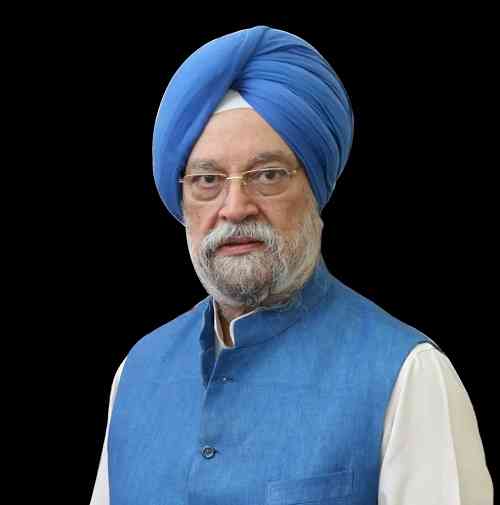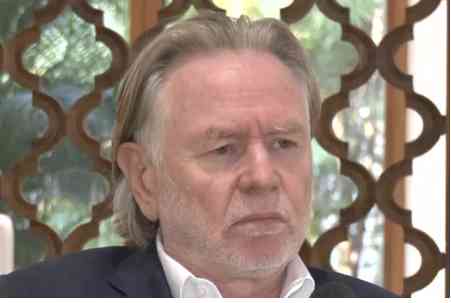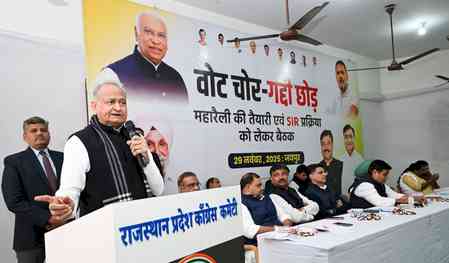Modi’s Hanuman Moment: India’s Longer Leap in a World of Walls

By Hardeep S Puri, Union Minister for Petroleum & Natural Gas
As lamps are lit across India, a timeless scene from the Ramayana speaks to our present. Hanuman stands at the edge of the ocean, uncertain of his strength, until Jambavan reminds him of what he already possesses. The leap that follows is not a miracle; it is self-belief in motion. That is what Prime Minister Narendra Modi has been preparing the Indian economy for: one that draws from its inner strength to overcome global turbulence. As the world turns inwards with new visa barriers and tariffs, India under Modi is turning its own confidence outward, transforming adversity into acceleration.
In recent months, the United States has imposed a USD 1,00,000 fee for new H-1B visa petitions and a 100% tariff on branded and patented pharmaceutical imports. These moves were framed as job-protection, but they underscore a deeper churn: the return of protectionism and demographic anxiety in the developed world. India’s answer under Prime Minister Modi has been to strengthen the three pillars that no tariff can touch: scale, skill and self-reliance.
The contrast with the world is striking. China’s population is ageing rapidly, its median age now past forty, while India’s remains under twenty-nine. Two-thirds of our people are below thirty-five. That youthful energy, harnessed through skilling, education and enterprise, is what makes India the growth engine of the world economy. It is not a slogan when global institutions report India contributing more than sixteen per cent of global growth last year. It is the result of a decade of reform, investment and infrastructure under the Prime Minister’s leadership.
Recent data underlines this momentum. The Reserve Bank has revised India’s GDP forecast for FY26 to 6.8 per cent, citing resilient domestic demand, steady investment flows and a healthy monsoon outlook. GST collections in September crossed ₹1.89 lakh crore, the ninth consecutive month above ₹1.8 lakh crore, showing both buoyant consumption and a widening tax base. Foreign-exchange reserves have touched 700 billion dollars, enough to cover almost eleven months of imports, while remittances in the June quarter stood at 33.2 billion dollars, well above last year’s levels. The manufacturing PMI held strong at 57.7 and services at 60.9, reaffirming India’s status as the world’s fastest-growing large economy.
This buoyancy is also mirrored in the markets and in the streets. Retail and e-commerce sales during this Dussehra have touched their highest levels ever, crossing ₹3.7 lakh crore according to industry bodies such as CAIT and Retailers Association of India - nearly 15 per cent higher than last year. Online platforms alone clocked over ₹90,000 crore in gross merchandise value during the first fortnight of the festive season, driven by demand for automobiles, electronics, gold and apparel. Diwali is now expected to break all previous records, signalling not only consumer confidence but also the success of the government’s consistent push to expand formal credit, digital payments and rural purchasing power.
The economic foundations are solid. Over the past decade, India’s GDP has nearly doubled to become the world’s fourth largest and imminently expected to overtake Germany. Foreign-exchange reserves exceed USD 600 billion. Inflation is moderate, and fiscal prudence is matched by record public capital expenditure. In 2024-25, India’s overall exports of goods and services reached an all-time high of about USD 825 billion, while merchandise exports alone were about USD 437 billion. Renewable capacity has surpassed 220 GW. These numbers tell one story, of a nation that has moved from fragile to formidable under a leader who marries vision with execution.
It is a sad reality that Prime Minister Modi’s approach to Atmanirbhar Bharat is being misconstrued for political gains by a few naysayers who are still viewing it through twentieth-century lenses. Self-reliance is not isolation. Atmanirbhar Bharat is best understood as strength turned outward. It is a strength that allows engagement on equal terms. It is the capacity to make in India for the world, to decentralise opportunity so that value flows to those who create it, and to engage global markets on equal terms. From mobile phones and defence equipment to medical devices and solar modules, production-linked incentives have catalysed investment, jobs and exports.
The Anusandhan National Research Foundation, with ₹50,000 crore of planned outlay, will revitalise our R&D ecosystem. A second Fund-of-Funds for Start-ups and the expansion of PLI schemes will deepen our technology base. This is Atmanirbhar Bharat as strategic autonomy, which is rooted in self-belief, realised through policy, and amplified by global partnerships.
Under Modi’s guidance, India built the world’s most inclusive digital public infrastructure. The Unified Payments Interface now handles more daily transactions than Visa, over 650 million a day. Aadhaar, DigiLocker and ONDC together form an ecosystem that connects citizens, small businesses and innovators at a population scale. UPI’s global partnerships with Singapore, the UAE and others show that Indian innovation can set global benchmarks. This is technology as governance, empowerment and export.
People remain the centrepiece of this story. Our diaspora, over 32 million strong, is among the world’s most successful and respected. Eleven Fortune 500 companies today are led by Indian-origin CEOs commanding a combined market capitalisation above six trillion dollars. Their journeys mirror the aspirations of a new India: skilled, confident, solution-oriented. Remittances of $135 billion in 2024 are not just inflows of wealth; they are affirmations of trust. As Prime Minister Modi has often said, the Indian abroad is not just an expatriate but an ambassador of India’s values and enterprise.
The Prime Minister’s leadership has given this scattered global energy a domestic anchor. Make in India, Startup India, and Skill India are not parallel tracks but a connected value chain: identify opportunity, enable entrepreneurship, equip talent. The next step is a comprehensive global skilling mission that unites these initiatives under a single framework. Standardised curricula aligned with international certifications, pre-departure training for workers, language and cultural orientation, and portable social-security agreements, these will make the Indian worker the preferred professional across continents. It is an agenda already in motion through multiple G2G partnerships forged under Modi’s diplomacy.
The symbolism of Hanuman’s leap is therefore apt. It was not an act of defiance, but of duty fulfilled through self-realisation. Prime Minister Modi’s governance philosophy is rooted in the same belief that India’s destiny lies in awakening the potential of its people. Infrastructure, digital transformation, green energy and global partnerships are the instruments of that awakening. When others build walls, India builds capacity. When others narrow trade, India expands opportunity. When others fear the future, India prepares for it.
Hanuman’s leap was the recovery of memory. Prime Minister Modi’s project has been to restore that national memory of capacity. When others build walls, India builds capability. When others ration opportunity, India scales it. That is how a civilisational confidence becomes a modern competitive edge. As we approach Diwali, it is worth recalling that Hanuman’s leap did not shorten the ocean; it enlarged his confidence. The world may raise new barriers, but India today has the leadership, resilience and purpose to rise higher. Guided by Prime Minister Modi’s vision, this is a nation that will not pause at the shore. It remembers its strength and leaps ahead.


 City Air News
City Air News 











